#BYTHOS
Explore tagged Tumblr posts
Text
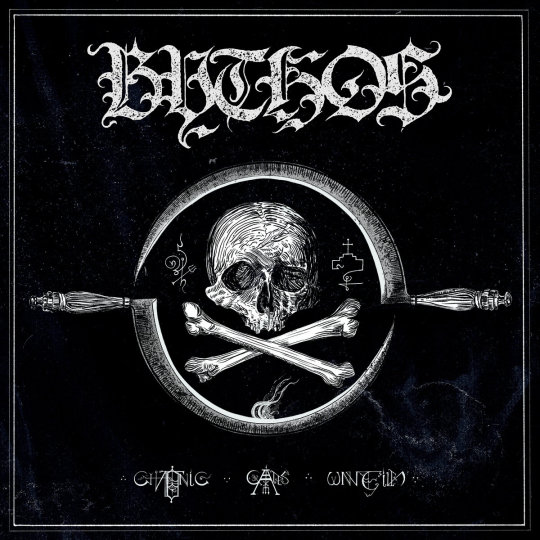
Bythos | Chthonic Gates Unveiled | 2024
Finnish Black Metal
#Bythos#Chthonic Gates Unveiled#Finland#Finnish Black Metal#Black Metal#Occult Black Metal#music#band#Terratur Possessions#Bandcamp
8 notes
·
View notes
Text
youtube
BYTHOS-BLACK LABYRINTH
#BYTHOS#BLACK METAL#BLACKENED DEATH METAL#BLACK DEATH#DEATH METAL;#HEAVY METAL;#METAL#THE WOMB OF ZERO#2020 ALBUM#Youtube
2 notes
·
View notes
Text
0 notes
Text
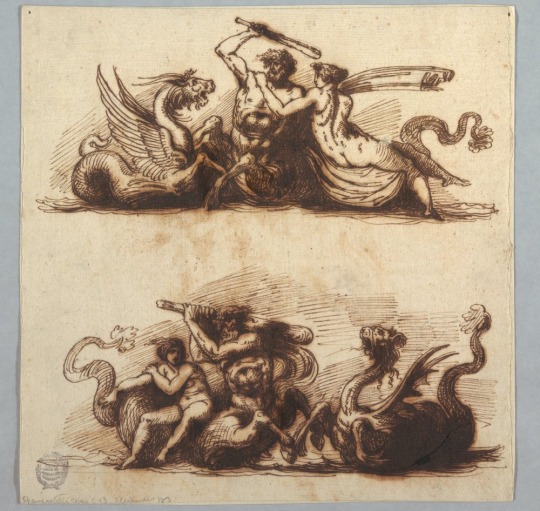
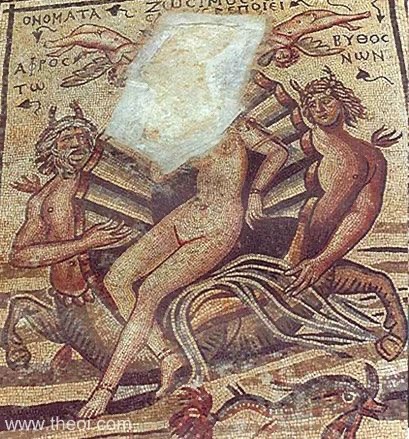
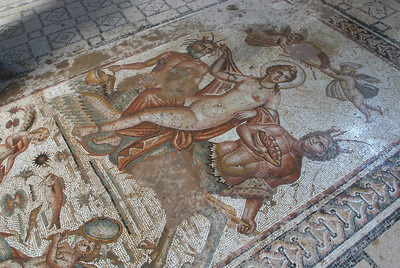
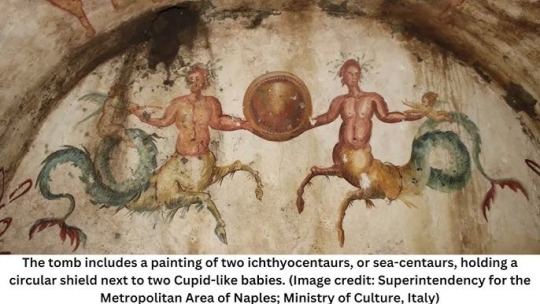
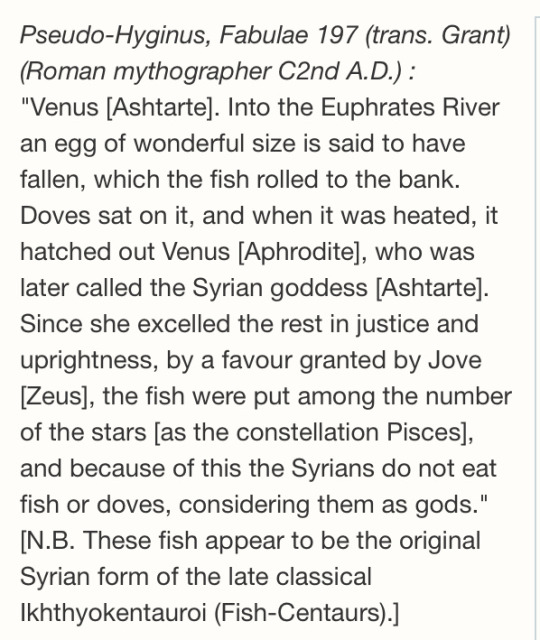
Aphrodite having these cool uncles who took care of her when she was a grown ass woman that was just born it’s so cute and silly.
#I swear there was a cool classical painting of them but I can’t find it#they were carrying A-hrodite in a conch shell#greek mythology#ancient greek mythology#greek pantheon#greek goddess#Aphrodite#Bythos and Aphros
64 notes
·
View notes
Text

Bythoseyrrvik
A guardian and a monster. A creature that was born thousands of years ago and still roams the earth; tho not on land, but in water.
Bythoseyrrvik is a giant orca merman, that has lived most of his life as a guardian to a city that no longer exists on the maps that humans know of. The city, Yophetis, once a mecca for religious worship but also architectural marvels, was built to host giants; with buildings so large they could be seen from miles and miles away. Yet, the creatures the city both worshipped and feared would not walk through the streets in a way the people hoped, because a disaster would wipe the city from history.
Only a few written records remain, but it is not many who can understand the ancient language of a civilization long forgotten, especially since the sister city, Atlantis, is far better known.
Bythoseyrrvik didn't exactly mind keeping the waters safe around the city, as he had claimed the area as his own along side another orca merman Ölziidalaiþrȳð (@nvrcmplt). Inseparable since time long passed, with a bond that many mers would be jealous over; mutual trust that was built through blood and tears so long ago. He could safely move through the waters, knowing well the other was there beside him.

Bythoseyrrvik is capable of great speeds. If he was to swim in circles long enough in high speeds, he will create a whirlpool. It uses up a lot of energy, so he doesn't do them often. His size allows him to use his own bulk for takedowns as well, by ramming into his targets with force. Bythoseyrrvik has multiple scars on his skin from battles fought with other gargantuan creatures, ships and humans, as well as monsters.
Over centuries he has sunk ships, big and small. Large ocean going vessels made to survive rough oceans were nothing to Bythoseyrrvik. He'd rip off planks, crush rudders, push the ship off course or balance. He cared not how, only wanting rid of them fast.
Bythosvik is left handed and will favour said side when attacking or approaching prey.
He's not exacly the nicest, especially to anyone outside of his pod. Often than not he will intimidate / attack first, and ask questions later. Not that the questions usually are asked or answered, as the potential threat has been dealt with already and maybe even eaten at that point.
His favorite food is deep ocean squid, but he also does enjoy whale and shark meat. There's no remorse in eating humans either, even if they once were ones to almost worship him and his pod mate. When a purpose has been served, he can easily detach himself. Relatively food orientated.
Modern era is very noisy and annoying. People annoy him more than they used to so one should be careful while approaching. Bythosvik is relatively calm, but won't take kindly if he feels threatened or if he deems his pod mate to be in danger.
He's a leviathan of old, and his size rivals that of a Kraken. Few come close to his colossal size.

The only one Bythosvik is friendly and caring with, for now, is his pod mate. They are, after all, the only one that matches him in strength and size. They're often greeted with thrills and clicks, bumping against them and even occasionally invited to play. Other orcamers and orcas he can befriend and tolerate. And sometimes, he may even swim along them.
Bythoseyrrvik can breathe both normal air as well as under water; sensitive gills on his ribcage make breathing under water possible. He doesn't have to be moving in order to breathe, as the gills pump water through on their own, allowing him to rest comfortably on the sea bed. A large heart and strong muscles aid with this. The gills are mainly used to aid with air intake during deep sea dives (hunting) or when in attack mode (to fuel the large body with enough oxygen).
He knows how to speak human speech, but it's another thing if he wants to bother. He also speaks the ancient language of Yophetis and Atlantis. He hasn't learned to read, but can recognise a few ancient letters of Yophetis forgotten language.
Similar to Atlantis, Yophetis had its own power source in form of a crystal. This crystal was buried in layers of debris and sediment when the city fell into the ocean. Some say it broke down, and thus couldn't uphold the civilisation or keep the ocean from claiming it as its own. Bythoseyrrvik and Ölziidalaiþrȳð both carry a piece of this crystal with them.
#. bythos . muse info#LESSGOOOOOOOOO AYYYYYY#also I'm posting this on my phone from work so if it is wonky as all fuck you didn't see anything 🫵
9 notes
·
View notes
Note
hey ct, i only recently started reading up a bit on gnosticism, i'm very intrigued by it but i was wondering about something i'm hoping you could help me with: how do the gnostics avoid an endlessly recursive argument about the imperfection of the creator? what i mean is, if the biblical god is imperfect because he created the imperfect material world and allows for all the evil and suffering in it, how come this doesn't apply for the gnostic true god, if he created the imperfect demiurge and allows for it to allow for evil and suffering? i hope my question makes sense
That's actually a pretty solid criticism of Gnostic theology lol. "Why should we worship the Pleroma if they ended up allowing Ialdabaoth to exist?"
Different sects will deal with that question in different ways. They tend to hinge on the mythology around the mother of the Demiurge, Sophia.
In one version, Sophia wanted to emulate the creative power of the Bythos out of ambition, but her distance from The One meant her creations were imperfect. In another, she attempted to create without the co-counsel of her other divine half, and thus her creation was imperfect.
254 notes
·
View notes
Text
Random CHB headcanons that no one asked for, but I decided to provide:
Argus has a golf cart that he drives around camp
Hecate magicked the land so that there was more room to add cabins
When CHB reached about 100 cabins, the tables at the dining hall were replaced with four long ones because 100 mini tables with 2 kids each is wild.
Hestia joins everyone for dinner, and there's a waiting list to sit next to her. I wrote this here.
I feel like I've read something like this in a fic before but I have no idea what fic, or even what website, it was on. Hecate, Iris, & Hermes worked together to create a portal between CHB & CJ & the Waystation so that people (and elephants) can easily transport between the three.
This one I've definitely read in fics before, but in a lot of them, so I have no clue who to credit. At the base of Half-Blood Hill the Athena and Hephaestus Cabins built a city reminscent of New Rome with schools, houses, theatres, libraries, hospitals, you name it.
There's an annual "Demigod Olympics" where each cabin (or combo of cabins depending on size) compete in different camp activities for the coveted laurel wreaths. Children who have an advantage (ie Apollo & the Hunters for Archery, & water dieties for canoeing) have their own seperate competition that is the talk of the town.
The children of the water dieties (including Percy after he actually begged) have an exchange program with Camp Fish-Blood where they spend a week in the summer studying with Aphros and Bythos. (Every year the Argo II peeps beg Percy to bring back brownies for the annual Argo II Reunion) (Percy does come back and only speaks dolphin for a while)
Thalia's tree is decorated with ornaments that are shaped like the camp beads during the holiday season.
CHB goes all out for Greek pagan holidays. It's a time for sure. (Same with CJ and Roman pagan holidays)
Theatre demigod's production of The Lightning Thief. No other notes. (Actually, Mr D gives the demigod playing himself tips)
#trials of apollo#heroes of olympus#percy jackson and the olympians#pjo hoo toa tsats#pjo hoo toa#camp half blood#camp jupiter#the waystation#camp fish blood#wait why do we never talk about camp fish blood again? I feel like we should#hestia (percy jackson#argus#give argus a golf cart my man deserves it#he also deserves more mentions
23 notes
·
View notes
Text
i really love clownmuffle's role in chicago. she's the highlight of it for me. sometimes i feel like chicago's group-identity-vs.-individualism theme is a bit too much of a sledgehammer to the head but i think that the way that... all of clownmuffle's solitary lone wolf singularity ultimately ends up being reliant on other people, right, that she needs other people's help to maintaion her absolute indpendence she prides herself on, i think that's a really subtle and clever way that the narrative challenges her ideals. clownmuffle reflects on it herself, how much has she given away to other people in order to ensure that's what left is just for herself?
she survives bythos because of hegewisch and madoka. she gets away and makes it to gatinaeu because of murrie, then she needs gatineau to recover so badly she lets gatinaeu retraumatize her (and then cuts off more parts of herself by dissociating away from that harm). she survives the capitol attack because of hegewish and then, when truly 'free', operates as a pawn of her primarily due to an externally (if accidentally) induced loyalty to joliet. then it's berwyn and darien who make her reflect on her own situation, murrie who saves her life yet again... clownmuffle is in many ways this unstoppable singular force of will that warps the narrative around her, but she's only able to be that because of the foundations laid by the people she exists in community with, no matter how much she denies that or tries to escape that. i think it's a really interesting recurring narrative beat, this kind of big lie at the heart of individualism, and clownmuffle is an entertaining as hell character to watch it play out with too
45 notes
·
View notes
Text
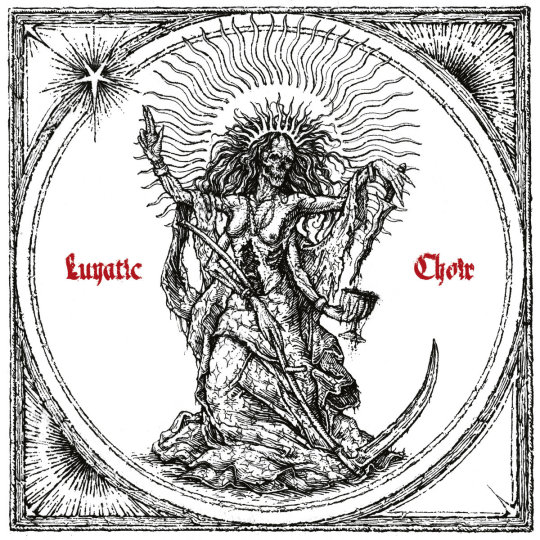
Night Shall Drape Us | Lunatic Choir | 2024
Finnish Black Metal
Artwork by War AArtworks
Featuring members of Behexen, Darvaza, Bythos, Chamber of Unlight
#Night Shall Drape Us#Lunatic Choir#Finland#Finnish Black Metal#Black Metal#Occult Black Metal#music#band#Behexen#Darvaza#Bythos#Chamber of Unlight#Sargeist#art#artwork#artist#War AArtworks#Season of Mist#SOM#Bandcamp
10 notes
·
View notes
Text
youtube
BYTHOS-WOLVES OF HADES
#BYTHOS#BLACK METAL;#BLACKENED DEATH METAL#BLACK DEATH#DEATH METAL#HEAVY METAL;#METAL;#CHTONIC GATES UNVEILED#2024 ALBUM#Youtube
1 note
·
View note
Text
0 notes
Note
God, I way prefer the design of the Aeon over the Modron. It goes way better with them being embodiments of universal order to be something that isn’t necessarily organic or have organic features. They also don’t look like, as a few have said before me concerning Modron, like rejected animated film mascots.
Yes! The aeons do have one that can take an organic form, as you'll see in like an hour, but it's just a for communication/manipulating things. And while many are mechanical, many aren't! Other books we aren't covering this tournament, there's also the the bythos who guard the laws of space and time

or the Theletos who balance the dichotomy of fate and free will.

42 notes
·
View notes
Text

few of my muses are being horny on main again and i'm at work while they wanna do very raunchy nasty stuff
let me live gdi
#culprits today: daes'e. takuya. mephi. kentarou. leiv'o. bythos (of all beings wtf). su yin and vulcan..........#stop get some help#ooc .
11 notes
·
View notes
Text
Istaroth is Paimon (ft Venti & Mona's Master)
disclaimer: the amount of comments i've gotten on reddit saying "Istaroth isn't paimon, she's a branch of istaroth!!" that is literally what i'm saying
Who Is Istaroth?
Istaroth is a God who can control time & wind, a shade of Phanes (Primordial One). She was known in Mondstadt and Enkanomiya, but the people of Mondstadt gradually forgot about her. When Enkanomiya sank, she continued to be worshiped because she was the only shade who responded to them. The worship stopped when Orobashi arrived and banned Sun & Moon (a book all about Phanes, Enkanomiya, and Istaroth.)
The statue in Inazuma is Istaroth. I also believe that the Battle Pass Icon is her. The article itself ties connections between her and the Welkin Moon girl. Ignoring how their appearances are identical, they also have connections with the moon. Istaroth is associated with the moon through “Sun and Moon”. Additionally, “Astaroth” (goetic demon) is the personification of the moon and can control it.
Istaroth’s aliases are “The Thousand Winds”, “Tokoyo Ookami”, and “Kairos”.
The Theory:
It’s better if I compile this more into a list. Starting with the smaller stuff…
The Paimon menu allows you to control time. I honestly feel like this is the best evidence.
Paimon is in all of the marketing, emails, she’s the one who delivers us messages outside of the game itself, but no one in the game knows who she is. When people see her, they think she’s a balloon, a fairy, or a pet.
Paimon jokes about being the God of Protection
Paimon’s outfit has the same details as a fully-leveled Statue of the Seven. Her crown has the same design as the golden bar on the statue. Her boot also looks like the nails sent down by Celestia.
Canotila the Melusine described Paimon as a balloon floating in the air with her string extending upward above the sky itself.
Phanes created Istaroth; she is a being of Teyvat. Since she is affected by the Irminsul tree, it would explain why Paimon is affected by the tree.
Astaroth is depicted as having a crown, which Paimon has.
Astaroth and King Paimon both specifically teach sciences and answer any question asked of them.
In Gnosticism, which is where Genshin gets a lot of its inspiration from, Barbelo is a part of Bythos, and Barbelo is both male and female.
In Genshin, Istaroth is Barbelo, and Phanes is Bythos, having created her as a shade. Paimon and Venti are parts of her.
In Ars Goetia, King Paimon is aware of all past and future events, anything that has happened or will happen. This includes “secret things”.
In Genshin, Istaroth has similar powers; control over time and the whole thing that happened with Makoto and Ei (more on that later).
In Venti’s Character Demo, it says that he is “born from the branches of time.”
In “Sun and Moon”, they say that Istaroth, “Was the measure of a thousand winds and the sun and the moon”, with Venti associated with the wind and Paimon associated with the moon.
In Gnosticism, Barbelo is one of the most important figures of Gnosticism. She is known as the “triple androgynous name”, or as the “three times spirit”, having three parts of herself. Barbelo/Asherah is another name for Ishtar, who is one of the parts of Istaroth’s name. Barbelo is depicted as a figure that looks similar to the Welkin Moon girl.
Two paragraphs ago I said that Istaroth is referred to as a thousand winds, a sun, and a moon; Venti is the wind, Paimon is the moon. So who is the sun?
There’s a character in Genshin named Barbeloth, Mona’s master. I believe it’s possible she could be the sun. I spent a lot of time trying to figure out why she has the name of this important figure connected to Istaroth. Genshin has a theme of “three”, and Mona’s master renamed herself to be “Astromancer Barbeloth Trimegistus”, which could also tie into the three identities of Istaroth.
In Venti’s Character Story 3, it says that he was a “single thread of the thousand winds that roared through the northern lands.” Notably, Istaroth goes by “the thousand winds”.
In the quest “Time and Wind”, you’ll hear a voice saying “An ancient tale comes whisked away in the wind.. In time it will grow and sprout again.” Which could be referring to the samsara cycles and how Istaroth (Paimon/Venti/Possibly others) will continue the story. Additionally, the sundials are actually more likely to be moondials.
In 2023’s Lantern Rite, Venti shows up introducing himself with the saying connected to Istaroth. Paimon completes the saying, and then remarks “Did Paimon just unconsciously complete that saying?”
The statue of Istaroth in Inazuma wears a necklace with an Eye of the Storm on it, which is most prominent in Mondstadt. It’s also noted that this statue and Venti’s statue are 6666 meters apart from each other. Additionally, this statue is called “Statue of the Omnipresent God”. This perception of Istaroth is supported in the Ars Goetia as well as in Genshin; Paimon is everywhere. The statue’s moniker is “Thousand Armed, Hundred Eyed”, which is a reference to real-life Guanyin, but I take note of the “thousand”, a theme with Istaroth.
The Sacred Sakura was planted with the help of Istaroth. When Makoto died, Ei went into the Realm of Consciousness and said goodbye to her sister. When she came back, the tree was there, and all the people acted like it had been there forever. The Realm of Consciousness is also a domain (not the one we’re used to for battle), where time flows differently. Another example of a domain would be the Eternal Oasis.
The ancient Near Eastern goddess Astarte (Istaroth), she works closely with Baal. I thought that detail was cute considering the story quest.
In Raiden’s 2nd Story Quest, Rifthounds attack the Sacred Sakura’s roots which cause it to ooze glowing blue stuff, and Paimon asks what it is, but there was never an answer.
This might be a stretch, but it could have something to do with what I call Celestial filth. For example, the Lumenspar is Celestial filth. Like the Abyssal goop, it’s invasive to the Chasm and spreads quickly. The description of it is “A sky-blue crystal that glitters so brightly that it brings forth echoes of the heavens above.” Having your Lumenstone equipped causes the Abyssal text to fade away. The Celestial filth comes from the nails sent down from Celestia, but the fact that the tree goop is blue and glows reminds me of the Lumenspar.
When Yae takes us through the Realm of Consciousness, we see Inazuma being built, and the memories are all of Inazuma, except for these Cecilias. Cecilias only grow in Mondstadt, on the Starsnatch Cliff “where harsh winds blow.” Cecilias are tied to Venti.
You could also say that Raiden storing the visions on the statue is symbolic, considering that visions are tied to both Celestia and the Archons.
Also, when it comes to Paimon’s design, she has a cape-thing with the galaxy on it, and in the Paimon menu, when she floats, she leaves behind a constellation trail. I also tie this with Istaroth’s theme of the moon, but it also reminds me of the general concept of otherworldliness.
There's a Mesopotamian symbol named the Star of Ishtar (Istaroth), which looks similar to the Deshret symbol and the Khaenri’ah star and it's also closely tied to the crescent moon.
Why doesn’t Paimon remember she’s Istaroth?
The answer could be Samsara cycles. With every samsara cycle, the same roles are always present, but it’s new people playing them. Something happened to Istaroth, and we don’t know what it was, but she’s disappeared and now we’re stuck with the twerp Paimon. I’m not sure how to answer this question. Maybe it’s like the Sumeru archons.
Something To Note
In the beginning of Genshin, we start the game at Starfell Lake. It’s never said where we fish Paimon out, but we could imply that it was at this lake. The lake, which isn’t too far away from the Nameless Island associated with Istaroth. People have pointed out that the background of the Paimon-fishing-out-CG is actually Guyun Stone Forest. In the beginning cutscene, we can see the nameless island in the distance. Paimon says nothing about where we fished her, so who knows. It’s our first time being in Liyue, but she knows that the statues look different because we’re in Liyue, so personally it doesn’t make sense that we got her in Guyun Stone Forest.
More About Welkin Moon Girl
This part is at the end because it’s me just playing with an idea. So it’s called “Blessing of the Welkin Moon". Welkin means “the sky” or “heaven.” She’s blessing us with primogems. Primogems are… From the Primordial One?
They’re described as “beyond the mundane world” and have the same chinese lettering as the phrase Primordial One and Allogene. Considering that the Gnoses are made from the 3rd descender's remains, would it be out of reach to say that Primogems could be created by/from the Primordial One?
Anyway, you could read it as Istaroth blessing us with pieces of Phanes (or, by association, herself).
The Welkin Girl’s cauldron has the triquetra on it, a symbol of Phanes and his shades, the same symbol on Paimon’s tummy. The Genshin Impact logo itself has Paimon’s crown, the circlet, above it. Genshin meaning allogenes, and thus tied to Phanes.
reposted from my reddit & hoyolab
#istaroth#venti#genshin impact#genshin theory#phanes#genshin lore#barbeloth#genshin mona#genshin venti#paimon
46 notes
·
View notes
Note
Question about Kronos (Cronus) ... Why did he swallow Hestia, Demeter, and Hera (his first three children), yet spared his bastard sons (Chiron, Dolops, Aphros and Bythos) with Philyra (and others, depending on variants)? The oracle was, and I quote Ovid's Fasti, 'best of kings, you shall be knocked from power by a son?' Hesiod's Theogony and Pseudo-Apollodorus' Bibliotheca also states word-for-word that it would be a son born to him.
Plot convenience?
I like to explain him leaving Philyra's son(s) alone by the fact that when he impregnated her he had become aware (or at least was strongly suspecting) that one of his sons had already escaped him. In Pseudo-Hyginus' Fabulae 138 he was even hunting for Zeus when he slept with Philyra. So his plan had failed, there was no point in eating any future children.
As for why he usually eats his daughters as well, it is not always made clear that he would be overcome by a son. Hesiod's Theogony 463-4 states: "For he had learned from Gaia and starry Ouranos That it was fated for him to be overthrown by his own child." The word used is παιδὶ, = child, with no inherent specification of gender without further context. It does often refer to a male, but not exclusively. The account from Apollodoros' Library 1.1.5. also uses the word παιδὸς = child. The prophecy he receives is far more ambiguous, not to say much less helpful, than the one received by Zeus wherein he learns that specifically a second child born specifically of Metis would become king of gods.
13 notes
·
View notes
Text
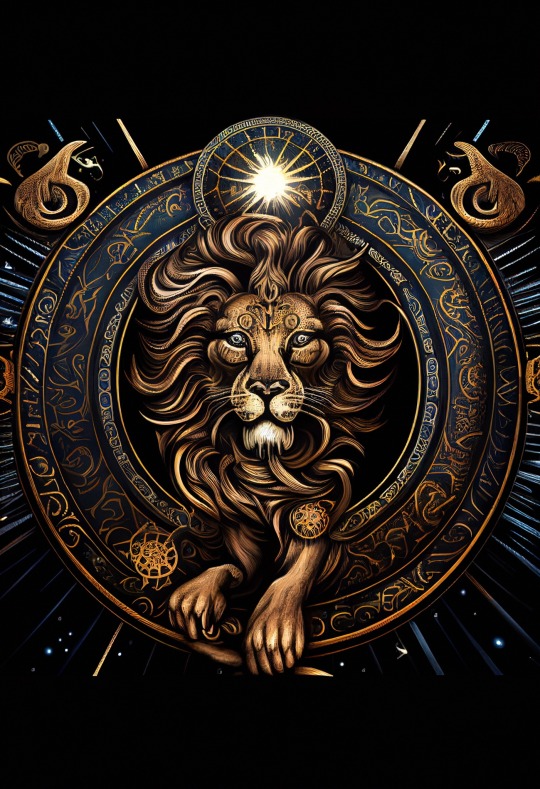
I greet thee, thou that fillest the whole structure of the air, spirit that stretchest from heaven to earth... and to the confines of the abyss... spirit that also penetratest myself and leavest me again. Thou, the servant of the rays of the sun, that enlightenest the world... a great circular mysterious form of the universe, heavenly spirit, ethereal spirit, earthy, fiery, windy, light... dark spirit, that shinest like a star... Lord, god of the Aions... Ruler of everything.
'Zurvan Akarana' Talon Abraxas

ON ZURVAN AND SORCERY from my forthcoming book on the Black Mass.
Magic and Sorcery are two different knowledge traditions, where Sorcery by definition implies black magic, or perhaps even more red magic. It is the magic of fire, eroticism and blood, directly linked to what India is referred to as tantra and kundalini yoga. The word has etymological connections to "blood" and the color red, but is derived from the Latin sors, "fate", and is the knowledge to free oneself from the web of Fate and learn to rule over the cosmic web.
The goal of the LHP has its roots in the Persian Zurvan religion in part. Zurvan is a First Principle, the primordial creator deity who put the principles of good and evil, the twins, and Angra Mainyu and Ahura Mazda, also known as Ormudz and Ahriman (who has little to do with Rudolf Steiner's concept of Ahriman). By putting these principles in place, Mankind could choose to do good or harm. This is the manifestation of Karma, or Cosmic Law. Ordinary people are either connecting to good or evil. This is not pretending to be good, but doing good in actions. Zurvan is beyond time and space, beyond good and evil. Zurvan is the "one", the "alone, the Singularity with all multifold inside. The name Zurvan derives from the Middle Persian name derives from Avestan zruvan-, "time". Zurvan is Time but also because of that not under the control of Time. Zurvan is like Kali, or the gnostic Aeon and Abraxas, it is Sorath, also spelt Zurath, The Deity whose number is 666. When reaching the aura of Zurvan you become a True Sorcerer that is not trapped by the Web of Fate, but becomes The Spider. This is in the Draconian Tradition known as the mysterious NOXXON: Zurvan is The Ultimate Twin, but with the dualism united, and thus a form of both Thaumiel and Thagirion.
While white Magicians work with the circles of nature, the Sorcerer goes beyond black and white, into the Royal Color of Atlantis, the color Red that transcend beyond the dualism of our common world. The Sorcerer is on a a journey to the Existence free from the influence of The Zodiac, The Zodiac keep us in chains, but can be used by The Sorcerer. Red is also synonym to Gold,and this is an Golden Alchemical Art. Both the name Zurvan and Sorcery derive from words with connotations “time”, “fate” and “red” although perhaps from different etymological sources. To emphasize the connection Dragon Rouge sometime spell it Zorcery.
In the mysteries of Hellas Zurvan is associated with Saturn and Pluto, and to some extent Chronos , He lives in primordial Chaos, in Bythos ("depth or profundity", Greek βυθός), Proarkhe ("before the beginning", Greek προαρχή), the Arkhe ("the beginning", Greek ἀρχή), "Sophia" (wisdom). Another name for him is Zoe, which means “life” itself. Zurvan is the pure “Existence”, “Vital Force”, what is known as Kundalini by the Indians and the same as Vril and Odic Force. Zurvan is however not an abstract principle, but one of the most advanced, powerful Intelligences in Existence, far beyond anything we humans normally can grasp. A famous picture of Zuravn/Aeon/Abaxas is Leontocephaline, The Winged Lion-Serpent Son, the being that rules Thagirion, The Black Sun.
When I was in my twenties I woke up one night and as a physical manifestation Zurvan, or Abraxas as I knew the name, was rising above me. The wings were raised and the serpent around him was black and red and coiling around him looking at me. The serpent wound around the body seven turns and was radiating with the colors of the seven planets and chakras. The lower one was connected to wrought iron, which shows Zurvan's role as a figure who gives man knowledge and tools, like the Fallen Angels. At his feet I saw a rod of Caduceus shining with the light of the kundalini. He carried a staff and two keys, behind him he had a stone tablet that I could not read. The face was surrounded by a blinding strong light and I heard a weird sound as it came from the depth of the Universe and beyond. Zurvan spoke straight into my consciousness:
“You've seen me before, I have chosen you, but you do not remember our first meeting. You have entered my hall in the Black Sun with its 12 rays and 1001 gates. Take my staff, my keys and the stone tablet. In time, you will know how to use it.”
“The Fire that I am, burns all the debts and mistakes of Mankind, all guilt and all the burdens of Time. I am Fire! I only serve The Red Dragon, no one else. I am the key bearer and The Angel and Beast in one, and my number is 666. My appearance you know from ancient statues and drawings, but I am the Primal Picture, The Winged Lion-Serpent Son. That is the riddle to know me.”
“People must gather to fulfill the Prophecies, otherwise Mankind will end itself without my help. Then they are devoured by Angra Mainyu and lost in a Hell that is forever pain. Do good! Do to others whatever you would like them to do to you! Never forget The Golden Rule.
“Free yourself from both good and evil, from my angels Angra Mainyu and Ahura Mazda. Be free. Do good. Be a warrior. And I will show you how to use these keys and open the Door of Knowledge and the Door of Life. Go forward into The NIght and gather the lost and scattered people and help them find their True Self. Direct the path to the Black Sun and The Daemon with this staff. And follow the Sacred Law. It is The Law written by Lucifer.”
I was surrounded by a cloud of light in all colors and Zurvans words were absorbed right into my heart. I proclaimed: This is a Path with a Heart”
Zurvan was gone and the rest of the night I was in a state of half-sleep and lucid dreams about the objects Survan had handled over to me.
25 notes
·
View notes